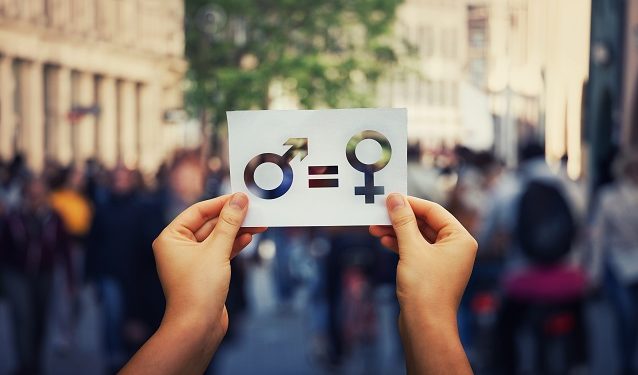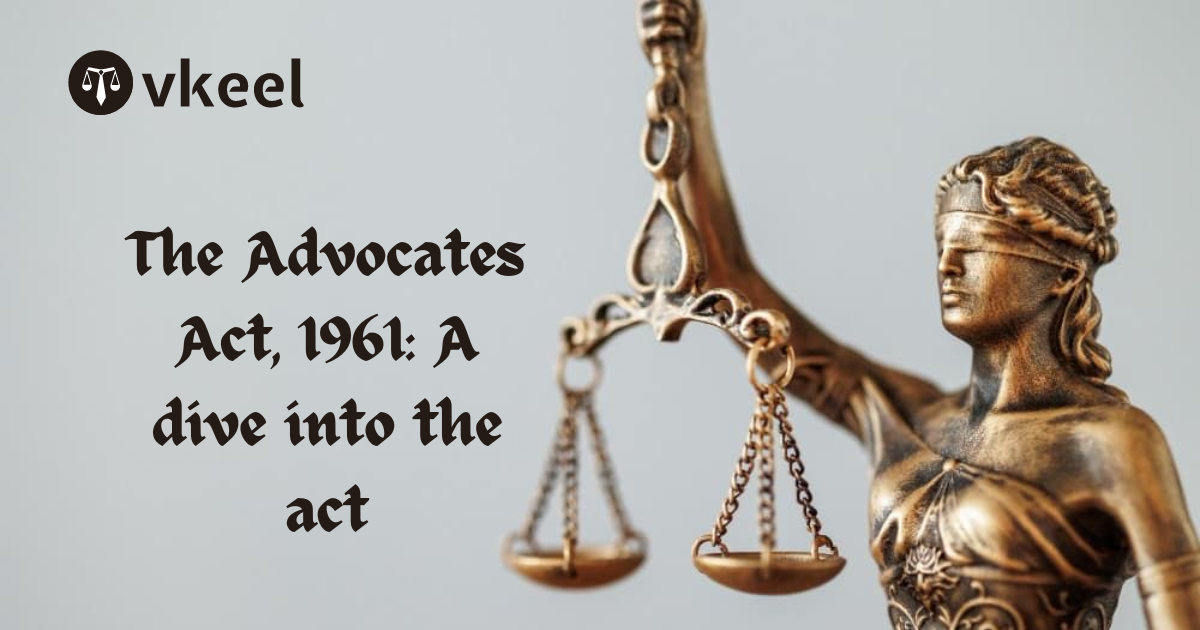Feminine Nature of Laws in India: Need of Change
By Advocate Anik
Abstract
Though our Constitution aims at providing gender equality in terms of status and dignity, it was framed to provide social justice and equality to women. Other statutes like IPC and Domestic Violence Act were enacted to penalise the crimes against women. Over the period, women’s condition improved, and men were victimized of the crimes like Sexual Harassment, Rape, Molestation, Cruelty, Domestic Violence etc. Thus, it is necessary to amend the statutes and make them gender-neutral. The lack of laws for male victims has affected the gender balance of our constitution. Therefore, the enactment of gender-neutral laws will help the Constitution to achieve its end of gender equality.
Consult with: Top Lawyers of India
Statement of Problem
Men have been victims of sexual assault and mental and physical violence which is regarded as crime neither by the society nor by the legislature in India and is rather considered as an emasculation of masculinity with the taint of homosexuality, due to which sexual assault and violence against men is underreported and is voice ridden. The lack of laws for the protection of males against sexual assault and violence violates men’s right to justice and their fundamental right of expression, equality before the law, equal treatment, dignity and the right to be protected by the state.
Research Methodology
The Doctrinal Method of research is being used here. The author first identified the point of focus and then located the law in the statutes like the Indian Penal Code and the Constitution of India and further referred to the discussions being done in the journals, newspaper articles, debates and various reports and then analysed the readings and wrote her findings in the current article. The Qualitative Method of research is also being used here. The author read and analysed various articles and discussions and debates and then wrote his findings and observations in the current article.
Introduction
The Women’s Rights Movement made a drastic change in Indian criminal law. Various crimes against women have been given due recognition and have been penalised in the Indian Penal Code. It is presumed that only men are the culprits and any offence related to sexual offence and violence can only be committed by men, as women are innocent and calm. Criminal Law of a country prescribes a set of norms to create solidarity and preserve social order in the country. Any person violating these laws is punished by the court of law. But the laws that have been created depends on the ‘socio-moral-legal-ethos’[1] of a community, i.e., the laws enacted are based on social traditions, cultural values and morals. The Indian Penal Code drafted by Thomas Macaulay criminalises the offence of rape (non-consensual and consensual in specified cases) and defines it as coercive sexual intercourse with a woman. Males are not considered as victims here, because according to the socio-moral thinking, men are powerful and dominating and cannot be raped.
Various Feminist movements have been organised for appropriate legislative reforms concerning the gender-biased criminal law system in India. 172nd report of the Law Commission also drew attention towards making the laws relating to sexual assault and violence to be gender-neutral so that, men may raise voice against the injustices done to them. A bill to make the crimes relating to sexual assault gender-neutral was introduced in the Parliament in 2013, which was further rejected. It is to be noted that the crimes, especially relating to the sexual offences against men are underreported because of the undue recognition of the fact that men can also be subjects to such crimes and also because of the already presumed thinking of society that men are dominant and powerful and if he is raped or sexually assaulted then he does not deserve to be called a man. Also, society thinks of such men as homosexuals and criticises them. There are no laws for the protection of men under such offences and thus, they prefer to be quiet.
Talk with: Best Lawyers of India
Sexual violence against men has been a major issue since the arms conflict and wartime. Prisoners of war and the enslaved men were most prone such assaults. Various cases and appeals have been filed in the 1720s before the International Tribunals set up for the war purpose. Sexual violence against men is a global issue and is recognised by various states but it still needs recognition and voice. Male rape is recognised by very limited countries in Europe, some states in the USA, Hong Kong and Taiwan. It still needs due recognition and the issue has to be brought up in the legal realm. In India also, many feminist thinkers and activists and research organisations have put up the issue of making the laws relating to sexual assault gender-neutral but all in vain. In a plea received by the Supreme Court of India for making rape laws gender-neutral, it was contended by Justice DY Chandrachud that “it is high time that rape laws should be made gender-neutral”[2], however, the plea was rejected by the Supreme court saying that it is for the parliament to decide whether they want it to be gender-neutral or not. However, it is to be noted that although article 15 of the Indian constitution provides for the special rights to be made for women and children, some laws in the Indian Penal Code are also violative of Article 14 and Article 19 of a person. Men are not treated equally when it comes to sexual assault, women are always treated as victims and men as the perpetrators. This also provides women with a benefit to misuse these laws made for their protection for which no remedy has been provided to men in the Indian Penal Code (if there are no strong evidence that he is not guilty). The present article thus focuses on the backdrop of the legislature to recognise the need for the enactment of gender-neutral laws relating to the sexual assault and violence and giving due recognition to such problems and compares the situation of India with other countries in the particular matter.
Content
Rape is always thought to be a crime committed only against females where only males can be the perpetrators. Many countries have amended their penal codes concerning the rape laws and sexual assault and have made them gender-neutral but still, the issue needs more attention and recognition. Male rape is still a taboo. It has to be noted that rape or any type of sexual assault or violence can be committed in four forms – male on female, female on male, male on male and female on female. Our society recognises only ‘male on female’[3] as an offence and the other three are not given due recognition. It is always considered that women are calm, kind and of soft nature and are always dominated by men and thus, it is only men who can commit such crimes of which women are the victims. This is one of the reasons, why the complaints of sexual assault against men are never reported in the court or the police station. Furthermore, if a male is being sexually assaulted or raped, he is always made fun of and the society considers that his masculinity has been emasculated and he gets a taint of homosexuality attached to it. Male rape is a major social taboo which has to be resolved so that justice could be delivered and every citizen of a country gets his right to dignity, equality before the law, speech and expression.
- Historical Aspect
Sexual violence and assault against men have been existing from the wartime and most prone to it were the enslaved men and the prisoners of war. The slaves were forced by their masters to rape a woman for master’s fun and as a form of punishment or marry her for producing children. The white women used to coerce the male negro slaves to indulge in sexual intercourse with them and if they denied they were dragged into the courts for raping the white women. In 1787, a negro male slave was forced by his master to rape a free black woman for fun.[4] Sexual abuse was a part of the slave system in Cuba. The negro male slaves were always considered as lusty and virile by the white Americans but it is to be noted that it was white females who were attracted to their bodies and forced them to indulge in sexual relationships with them under the fear of dragging these slaves in the court. For instance, a farmer locked her daughter in a room so that she does not get into a connection with a negro slave.
Another kind of assault which was done on men was the homosexual assault. Slaves, as well as the prisoners of war, were forced by their masters to sexually assault their male counterparts because their masters enjoyed it. They were forced to suck the testicles of their male counterparts and indulge in anal intercourse with them.
In a case, Barnett/Dandridge v. State of Washington[5] the complainant was raped by the defendants who alleged that males cannot be raped until sexually aroused and the complainant himself suggested for the sexual incident that occurred. This contention of the defendants was questioned as to female victims also give orgasmic responses while they are being sexually assaulted.
The condition of the refugees is also not good. On interviewing the refugees of the middle east, it was found that the adolescent boys and adult male refugees in Syria were subject to sexual torture and rape and gay and transgender refugees were being sexually preyed upon by multiple perpetrators.[6] Similar was the condition in Greece, where children between the age of 14-17 years were being sexually abused.
Seeing the male rape incidents happening during the war times and under the slave system, rape law reform movement was launched in the 1970s which advocated for changes in the traditional rape laws and the enactment of the gender-neutral laws and for redefining rape as sexual assault so that the term can become wider.[7] In 1995, a report of “Stop Prisoner Rape” estimated that over 60,000 prisoners are forced into involuntary sex every day.[8] Therefore, the issue of sexual abuse of males has been in existence from the last 500 years which neither legislature has taken into account nor the society.
Consult with: Top Lawyers of India
- The Taint of Homosexuality
Homosexuality being outside the tradition of various cultures is not accepted by many nations and is thus, a bigger crime than rape. Male rape is often misunderstood as homosexual or same-sex rape and it is considered that if a man is raped, the sex would have been consensual because men enjoy sex. The society considers that if a man is raped, his masculinity has been emasculated and thus, is treated like a woman. This puts men into immense mental trauma and they are thrown out of societal dignity and pleasures. It has to be understood that rape can be committed by anyone on any person. A homosexual can rape a homosexual, a heterosexual can rape a homosexual and vice versa, similarly, a heterosexual can rape a heterosexual. For instance, in People vs Yates, a male victim of rape reported his case in the police station, where the policeman not only made fun of him but also tainted him of being a homosexual and raped him.[9] Thus, most of the sexual abuses done against men are not reported because of this presumption that men themselves consent to sex and are considered as homosexual. The feeling of being considered as weak and being treated like a woman is also a major factor for underreporting of male rape cases. Many countries have decriminalised homosexuality but it is still not accepted by society and thus, they still consider it as a crime and against their moral ethics.
- Indian Scenario
The Indian society is patriarchal in nature and thinks of men as dominating and powerful and therefore, according to it, only women can be subject to sexual assault and abuses. Also, Indian society is traditional in nature and does not wish to go beyond its cultural values and is against homosexuality. Therefore, if any case of male rape occurs, they link it with the taint of homosexuality and considers the incident as consensual which happened between two homosexual partners.
It is to be noted that the nature of certain criminal laws in India is feminine, i.e., they are in favour of women and are totally against men but the state has forgotten that the society is dynamic in nature and laws have to be amended in correspondence to the progress of society. It is duly accepted that the conditions of women were poor years ago, but after various feminist movements, women have come to equal footing with men and thus, the crimes which were certainly expected to happen only against women are now being done against men too, to which the law is silent. Many activists have published articles for the reforms in laws relating to sexual offences. Similarly, many PILs have been filed in the Supreme Court of India for the amendment of the rape laws and other laws on sexual offences to make them gender-neutral but it is all in the hands of legislature to enact a law for it. In 2013, a bill was introduced before Rajya Sabha to make sexual offences laws gender-neutral which was further postponed by the parliament.[10]
The Indian Penal Code, 1860 includes in the definition of rape as a man is said to commit rape, the ambiguous nature of the law should be noted here. The law assumes that it is only men who can commit rape which is ambiguous in nature. It is to be noted that marital rape (not an offence in IPC) excluded from the definition of rape, is also a major issue. Many activists and lawyers claim that the phrase a man should be replaced by any person, thereby making the law gender-neutral. Also, there are no remedies provided to men, in case false rape allegations have been filed against them. For instance, a case came before Delhi court where a girl filed false rape allegations against a man due to which he suffered mental trauma and lost his family and job. Although, Supreme court held the case in favour of the man it still destroyed his life.[11] The question arises as to why there are no laws for such misuse of the laws especially made for women. Again, this is an example of the feminine nature of laws in India. The Centre for Civil Society also contended that the law should recognise that men can be raped too.[12]
The crimes related to sexual offences against men are underreported in India because of the social pressure of being thrown out of society. Although, various activists and lawyers have requested the court to make the laws relating to sexual offences gender-neutral, the power to amend the law lies with the legislature.
- Global Scenario
Male rape prevails all over the world but only a few nations recognise it as a crime. Male rape is a social taboo attached to certain myths like men are not vulnerable. Many countries still recognise male rape as an emasculation of masculinity and assume raped men to be homosexual.
In the United States, the Centres for Disease Control and Prevention reports, in 2010 stated that 1 in 71 men in the US have been raped, while 4.8% of men reported they were forced to penetrate someone else at some time in their lives.[13] Sexual offences against men are underreported in the US. Although, the FBI’s Uniform Crime Report in 2012, redefined rape and included phrases like anal sex, oral penetration and penetration with any body part of any person, which gave relief to the male victims of sexual assault. Hence, the law is made gender-neutral.
In the United Kingdom, in 2012-13, government statistics reveal that over 9,000 males were raped. Male rape is being criminalised in the United Kingdom, which was further redefined more specifically through the Sexual Offences Act, 2003. For instance, in 1978, a lady was imprisoned for a year for forcing a man to have sex with her.[14]
In China, the UN statistics on Men Violence in Asia and Pacific found that 3% of the instances of male rape have been reported there. Also, the offender, in this case, can be prosecuted for the offence of “forcible indecency” which was enacted by revising Article 237 of China’s criminal law and making the law as gender-neutral.
In Jamaica, instances of male on male violence have been increased. Poor men are the main targets. In 1994, male on male violence for one month ranged to 579 where 197 men between the age group 18-25 were murdered.[15] There are no special laws for the protection of men against such violence and assault. In Nigeria, gender-based violence against men ranges to 3000 in the selected states which includes rape, sexual coercion and forced sex.[16]
In the Philippines, after the amendment done in the revised penal code in 1997, Article 266-A of the code has redefined rape as an act of sexual assault and criminalises male on male rape and female on male rape.
Talk with: Best Lawyers of India
Many countries have recognised the need of the hour and have made the laws relating to sexual assault and violence gender-neutral but sexual assault and violence against men is still a taboo which has to be recognised and provided a solution for.
- Reforms in the laws relating to sexual assault and violence
The Indian Penal Code includes in the definition of rape only penile/vaginal penetration. In 1997, an NGO “Sakshi” filed a PIL in the Supreme Court of India to amend the laws and redefine rape and include in it oral penetration, penile/anal penetration, finger/vaginal/anal penetration, object/vaginal penetration and penetration into any part of the body.[17] A case appeared before the Delhi High Court, where a government official sexually abused his six-year-old daughter by inserting a bottle in her vagina. It was then alleged by Sakshi that the rape laws should be redefined and made wider and include oral, anal and object penetration in any part of the body.[18] The focus was on making the rape law gender-neutral. The Law Commission in its 172nd report recommended that the rape laws should be made gender-neutral and wider to bring the laws in tune with the progressing society. The Law Commission also contended that it is high time that rape in the Indian Penal Code should be redefined and proper definition of consent has to be derived in the penal code.[19]
The issue of violence against men has been recognised internationally, to which many high-level documents on sexual violence have been adopted – G8 declaration, UNSC Women Peace and Security resolution.[20] All these documents include remedies for the sexual violence done against men and contends that these laws should be made gender-neutral. The political phenomenon is also attached to the matter of rape law reforms, i.e., the reformation of such laws is based on controversial and non-controversial matters. It has been observed that if a state adopts a rape law reform and progresses with the same, other states are more likely to adopt a similar law. But if a state fails after the laws are reformed, no other state tries to go with such reformation. Also, during the elections, the legislature adopts non-controversial reforms for getting more votes. Rape law reforms are also based on public opinion because it is the society who elects the government and therefore, the legislature cannot make such laws which goes against their will.[21] For the first time in the United Nations, in 2003, a resolution was proposed to pay equal attention to the violence being done concerning a person’s sexual orientation.
It has been found that the issue of male rape is unrecognised and not given voice. Various activists suggest that the feminist movements and queer movements should be organised to help the issue get due recognition and voice. Apart from this, various NGOs working on the issue of sexual assault should also raise the issue and bring it into the notice of society.
- Constitutional Validity
Article 14 of the Indian constitution provides equal protection of laws, which means that everybody is entitled to be protected by the state. But section 375, IPC violates the very essence of this article. The Indian Penal Code in the definition of rape assumes the perpetrator as a man and considers that such offences can never be committed by women. But it is to be noted, that sexual violence can be committed by anyone against any person. The rape law in India, therefore, denies a man his right to equal protection of laws under Article 14 of the Indian constitution. Further, it also violates a man’s right to speech and expression given under article 19(1)(a), as the criminal law in India does not provide him with any remedy when it comes to him being sexually assaulted.
- Sensitive management of the victims
Sexual assault and abuse put a person into immense mental trauma and depression. The Indian law recognises the sexual assault against women as a crime, therefore, even if they are assaulted, they have some remedy in their hands but that is not the situation for men. Indian laws do not recognise sexual assault men as a crime and thus, it does not provide any remedy to them. This is also a reason as to why the complaints of sexual violence against men are underreported in India and many other countries which does not recognise male rape or another kind of sexual violence against them as a crime. The undue recognition and continuous criticism and pressure of the societal dogmas cause men to suffer from rape trauma syndrome which includes depression, behavioural changes and phobic anxiety.[22] Homosexuals have always been ill-treated and thus, if the same-sex rape occurs, the anxiety created by such offence is doubled. Males are more prone to HIV because of the anal trauma that occurs in male rape. Psychological treatment and guidance need to be provided to such victims.
Consult with: Top Lawyers of India
Conclusion
The IPC provides a very limited definition of the rape which needs to be redefined. Also, the laws relating to sexual offences have to be amended and should be considered gender-neutral. Sexual assault, rape or violence against men has always been treated as an emasculation of the masculinity by the society and due to the societal pressure and the fear of losing their power and dignity, men are more reluctant than women in reporting such crimes. Furthermore, our society is also not ready to accept the fact that men can also be raped by anyone. It’s not always women or children who are vulnerable and prone to such offences. There are increasing instances of men being sexually harassed – from being a target of comments heavy with sexual innuendo to being stalked.[23] But because men are burdened with the social dogma of being powerful and dominating, they are reluctant to file a complaint against these crimes.
Society is dynamic in nature and it has to be understood that everyone has to come out of their pre-existent traditions and cultural values and accept the social changes taking place. Male rape is always linked with the taint of homosexuality and is considered consensual which is another reason why men are reluctant in filing the cases. The atrocities are faced by men from the wartimes where they were being raped and sexually assaulted by their masters for fun. A very limited number of countries have recognised this act as a crime. But it can be seen from the statistics that, the countries where such crime has been recognised, the number of complaints about male rape and sexual assault has been increased.
Further, the lack of making laws relating to sexual assault gender-neutral draws attention towards the backdrop of the Indian Penal Code as being arbitrary and feminine in nature, as it is presumed in the penal code that it is only women and children who are vulnerable and can be raped or sexually assaulted. Further, it also violates article 14 and article 19(1)(a) of the Indian constitution. Although article 15 provides the legislature with the right to make special laws for the protection of women and children it is to be noted that presuming men to be strong does not mean that they cannot be sexually assaulted and raped. Various instances of them being assaulted have been discussed in the article above. Men are not provided with any remedies and are not given voice relating to such offences. Thus, they are not equally protected by the state nor they are given any right to speak.
The 172nd report of the Law Commission suggests to make the laws relating to the sexual offences to be made gender-neutral and requests the legislature to redefine rape and define consent within the code. Similarly, in 2013 a bill was presented before Rajya Sabha to make the laws relating to sexual offences gender neutral which was postponed by the legislature. Many activists and NGOs like Sakshi have filed PILs in the Supreme Court to draw their attention towards the issue but all lies in the hands of the legislature. The question here is why do we have to wait for an incident to happen? There might be multiple incidents which would have taken place but are underreported because the law is silent relating to such matters. No medical or legal remedy is provided to men if they are victims of sexual assault. They do not have any choice but to suffer. It is high time that the legislature should recognise the need for making such laws gender-neutral and provide necessary remedies to the victims of such offences.
[1] Khushal Vibhute, ‘Rape’ And The Indian Penal Code At The Crossroads Of The New Millennium: Between Patriarchiast And Gender Neutralist Approach 43 JILI, 25-44 (2001).
[2] Parliament can make law on rape gender-neutral, says Supreme Court, IT, 2019.
[3] Sandesh Sivakumaran, Male/Male Rape and the “Taint” of Homosexuality, 27 HRQ, 1274-1306 (2005).
[4] Thomas A. Foster, The Sexual Abuse of Black Men under American Slavery, 20 JHS 445-464 (2011).
[5] Ronald E. Smith et al., Social cognitions about adult male victims of female sexual assault, 24 JSR 101-112 (1988).
[6] Sarah K Chynoweth et al., Sexual violence against men and boys in conflict and forced displacement: implications for the health sector, 25 RHM 90-94 (2017).
[7] Cassia Spohn, The Rape Reform Movement: The Traditional Common Law and Rape Law Reforms, 39 J 119-130 (1999).
[8] Sandesh Sivakumaran, Male/Male Rape and the “Taint” of Homosexuality, 27 HRQ 1274-1306 (2005).
[9] Id.
[10] Bill to make sexual crimes gender neutral introduced in Parliament, IT, 2019.
[11] Spare innocent men anguish’: India ruling aims to end false rape claims, TG, 2019.
[12] India’s law should recognise that men can be raped too, CCS, 2019.
[13] Rape of males, (2019), https://en.wikipedia.org/wiki/Rape_of_males#Prevalence .
[14] Id.
[15] Nesha Z. Haniff, Male Violence Against Men and Women in the Caribbean: The Case of Jamaica, JCFS 361-369 (1998).
[16] O Oladepo et al., Factors Influencing Gender-Based Violence among Men and Women in Selected States in Nigeria, 15 AJRH 78-86 (2011).
[17] Khushal Vibhute, ‘Rape’ And The Indian Penal Code At The Crossroads Of The New Millennium: Between Patriarchiast And Gender Neutralist Approach, 43 JILI 25-44 (2001).
[18] Flavia Agnes, Law, Ideology and Female Sexuality: Gender Neutrality in Rape Law, 2002.
[19] Rukmini Sen, Law Commission Reports on Rape, 2010.
[20] Heleen Touquet & Ellen Gorris, Out of the shadows? The inclusion of men and boys in conceptualisations of wartime sexual violence, 24 RHM 36-46 (2016).
[21] Jennifer McMahon-Howard, Does the Controversy Matter? Comparing the Causal Determinants of the Adoption of Controversial and Noncontroversial Rape Law Reforms, 45 LSR 401-434 (2011).
[22] Michael B. King, Male Rape: Victims Need Sensitive Management, 301 BMJ 1345-1346 (1990).
[23] Adam, what do you mean you were teased?, THE HINDU (2017), https://www.thehindu.com/thread/reflections/men-too-may-be-sexually-harassed/article18351375.ece .
Disclaimer:
The information provided in the article is for general informational purposes only, and is not intended to constitute legal advice or to be relied upon as a substitute for legal advice. Furthermore, any information contained in the article is not guaranteed to be current, complete or accurate. If you require legal advice or representation, you should contact an attorney or law firm directly. We are not responsible for any damages resulting from any reliance on the content of this website.












